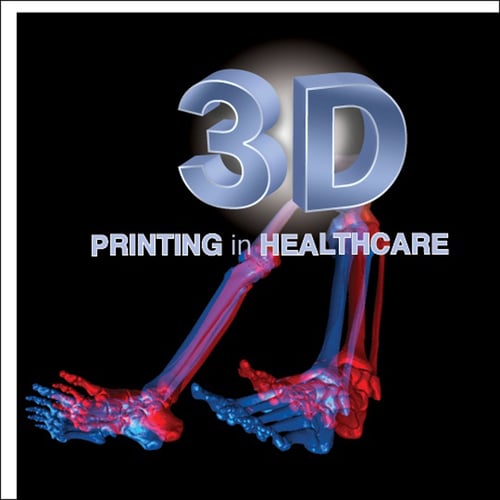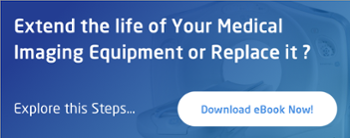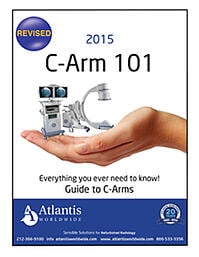Custom designed arms and legs being created on demand. Living tissue is carefully layered and molded to create a new nose or ear. Using the data from an ultrasound to model the face of baby while it’s still in the womb. To many these ideas  sound like they’re stories straight out of a science fiction movie. In reality these are inventions that happened years ago. What’s happening now is even more exciting. Everything mentioned in this paragraph is possible today because of 3D printing.
sound like they’re stories straight out of a science fiction movie. In reality these are inventions that happened years ago. What’s happening now is even more exciting. Everything mentioned in this paragraph is possible today because of 3D printing.
Although 3D printing has been around for nearly three decades, the advances to the technology in the last few years have truly been revolutionary. Initially 3D printers were enormous rigs whose cost was prohibitively expensive. Even if you could afford the 3D printer, the software necessary to create and design something often took a dedicated engineer to operate. Just a few of the reasons 3D printing was only put to use creating rapid prototypes and parts for aerospace, defense and in the automotive industry.
All that changed with the exponential advance of personal computing technologies within the 5 years. Not only have computers become both smaller and more powerful but design software has become more user friendly. 3D printers that used to fill a room can now fit on a desktop. And it has all become much more affordable. These factors have allowed entrepreneurs, scientists, schools and general tinkerers to start creating whatever they can imagine.
In the beginning 3D printers were strictly limited to ceramics, sandstone, plastics and metals. Today they are printing muscle tissue, skin, organs, cartilage and bones. For the future the potential is nearly limitless.
Overcoming Disabilities with 3D Printing
One growing use for 3D printing is benefiting anyone in need of a prosthetic device. Creating a custom prosthesis for a patient used to be a long laborious process full of trial and error. Even worse, patients were often stuck using something that didn’t quite fit right or caused irritation because doctors only had access to certain models or sizes and crude customization techniques. Today a growing number of doctors are able to create custom made arms, legs and hands that are designed based on a digital scans of the patient and tailored to their specific needs. Fully moveable and customizable these devices are empowering patients around the world. One organization called Enabling the Future (www.enablingthefuture.org) is utilizing volunteers with 3D printers and designs that are available for free on the Internet to help create arms and hands for children in need, giving them the mobility and confidence they need to thrive.
Reshaping Medicine with 3D Bioprinting
Meanwhile in universities and medical research centers around the world researchers are using the principles of 3D printing to create living tissue. Using cells grown in the laboratory scientists are able to systematically print muscle, skin, organs, cartilage and bones. For years researchers have been attempting to build these organs by hand with varying levels of success. 3D printing techniques guided by a computer have allowed for more precision and control, reducing errors and improving success rates. 3D bioprinting even works like it’s non-biological counterpart. Design files are selected from a database and cartridges are loaded into a machine that feed into a print head. Instead of ink or plastic, these cartridges contain different types of cells and other biological bonding agents. The print head moves back and forth switching between cartridges laying successive layers mere microns thick. Technicians in the laboratory follow along watching the progress through a microscope and monitor. In just hours the 3D bioprinter can create an organ, a skin graft, or a piece of cartilage.
Imagine the possibilities. Transplanted organs and tissue can be created from a patient’s own tissues and won’t be rejected. The time it takes to find and receive donor organs can be dramatically reduced, saving patient lives. Experts estimate that in the near future (less than a decade) machines will be able to print skin directly onto a patient's body.
Prototyping and Implants with 3D Printing
Whether it’s creating custom tools for use during medical procedures, testing new designs before putting them into production, or field testing new pharmaceuticals on living tissues before subjecting patients to potential side effects, the uses of 3D printing continue to grow.
Biomedical companies around the world are using 3D modeling and printing to create personalized hearing aids, dental restorations, orthodontics, sensors, medical models, and more. Pharmaceutical companies are using the precision of 3D printing to create and test new drugs. In 2013 a patient had 75% of his skull replaced by a FDA approved 3D printed plastic implant. From organs to orthotics, 3D printing is changing medicine, patient care and the way we think about what is possible in the world of healthcare.
As the technology continues to evolve, researchers and scientists will redefine what can be accomplished. There will also be many concerns about the accessibility and implementation of 3D printing which will undoubtedly raise debate on legislation and regulation. Regardless, it’s an exciting time to be on this new frontier of medicine.
Some of the process will typically begin with medical imaging. High-resolution MRI and CT scans are vital to the 3D printing process in the health care world. For those in the industry it’s increasingly important to insure that MRI systems, C-Arms, CT Scanners, and PET/CT/Nuclear systems are of the highest quality and producing accurate, detailed results. That’s where Atlantis Worldwide comes in. Whether you plan on exploring the world of 3D printing to improve your practice or just need high-quality, reliable and cost effective solutions for your medical imaging needs, Atlantis Worldwide can help you prepare for the future. Please Contact Us Today- for your refurbished medical imaging equipment needs.
Some blogs you may have missed:
- 3D Tomosynthesis, Breast MRI or Digital Mammography?
- Physicians & Social Media: Yay or Nay?
- C-Arms: The Importance of A Turnkey Solution
- 13 Ways to Decontaminate Medical Imaging Equipment & Protect Staff
- 3D Printing in Medical Imaging & Healthcare
About the author: Vikki Harmonay




